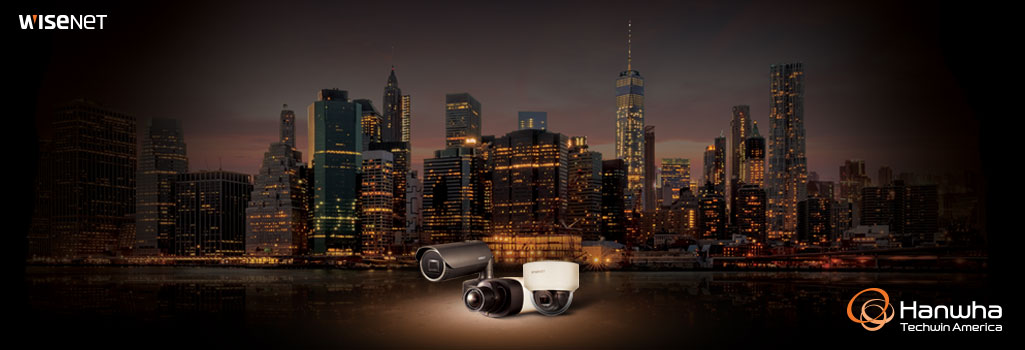
Low Light Camera Evolution – Crystal Clear, in Color, at Night
Any security camera should be able to render great quality images in daylight. However, when the sun goes down, not all cameras are the same. Since crime often happens in the dark, generating high-quality images in low-light conditions is an essential element of a video surveillance camera. You may have seen the grainy, greenish video output from low-cost cameras with a simple ring of IR lights. The usefulness of such images is questionable, since too much detail is missing, and it may be difficult to get a conviction if such footage was ever presented as evidence to a jury.
Key Elements of Low Light Performance
There are three key elements to consider when generating high-quality images in low light conditions — The camera lens, the sensor, and image processing.
The Lens: In low light conditions, the lens must be capable of delivering as much light as possible from the environment to the sensor, with minimum loss. A lens must have a small F-Stop number (large aperture opening) to gather all available light. As the size of the lens aperture increases, it gathers more light, but the anastigmatic (spherical & other aberrations) area increases as well. Another challenge is the structural difficulty of managing the alignment of the lens to the sensor when the depth of focus becomes shallow. Cameras for video surveillance typically use IR corrected lenses since CMOS sensors are sensitive in the infrared range and can look out of focus or softer in IR light. IR corrected lenses allow for the best day/night focus and produce brighter images with lower F-stop values. Hanwha Techwin’s own accumulated optical design technology made it possible to achieve one of the best lens design technologies for ultra-low light cameras. This revolutionary lens (F0.94) delivers more light to the sensor with less noise, offering color image surveillance for most night-time applications.
The Sensor: After the lens, it is necessary to have a high-sensitivity sensor which reacts well in low light environments. Larger sensors and larger pixels exhibit the best low-light sensitivity as they have a greater surface area per pixel so more light is able to affect each pixel. Hanwha Techwin’s extraLUX Series, part of the Wisenet X series, features a 1/2" sensor that has outstanding sensitivity and Signal to Noise Ratio (SNR).
Image processing technology:
During the day, the SNR is so high, any sensor noise is almost impossible to detect. At night, when the sensor gain is increased, sensor background noise is also increased. During amplification, any noise contained within the image signal is amplified proportionally, so less light always equals more noise. This noise not only decreases image quality, it also increases the image data size in digital systems. This is particularly impactful with network based video surveillance systems since it hinders transfer and storage efficiency. Therefore, it is necessary to effectively reduce noise using image processing technology. How a camera handles the noise inherent in its sensor is very important when designing for low-light environments.
Noise Reduction
There are two main types of noise present in typical CMOS (Complimentary Metal-oxide) sensors: Temporal Noise (changes over time due to internal heat) and Fixed Pattern Noise (constant pattern based on subtle pixel variations).
There are many image processing methods designed to reduce noise, and they can be classified as 2-DNR (2-Dimensional Noise Reduction) and 3-DNR (3-Dimensional Noise Reduction). 2-DNR is also known as “Spatial Noise Reduction” and it operates on the current frame to reduce any noise. 3-DNR, also known as “Spatio-Temporal Noise Reduction,” utilizes the current frame as well as the previous frame to detect movement and apply the correct reduction algorithm that minimizes motion blur.
Relying on many years of experience in image processing, Hanwha Techwin has developed a high-performance noise reduction and an image correction technology which maintains brightness, color reproducibility and sharpness in extreme low light environments. Named “SSNR (Smart Super Noise Reduction), the technology utilizes advanced spatio-temporal noise reduction technology optimized for video surveillance cameras.
These techniques are featured in the Wisenet X series cameras from Hanwha. Low light images processed in this way contain accurate information which was not clear in the original frame. Furthermore, with SSNR, the image is encoded with a low bitrate allowing it to retain its clear image quality while being transferred and stored efficiently.
Conclusion
Today’s top performing low light cameras draw on three key elements:
- A specialized lens that gathers all available light while being corrected for IR light
- A large sensor that is highly sensitive
- On-board image signal processing that can significantly reduce noise
It is essential to develop or obtain technologies for lens, sensor, noise reduction and Image Signal Processor (ISP) management in order to remove noise and maintain transmission performance, color reproducibility and image sharpness while securing visible sensitivity in extreme low light environments. Hanwha Techwin has developed Exposure Control technology that optimizes noise in visible bright areas by calculating the correct exposure value, ISP Control technology to ensure color reproducibility in low light environments, and technology that removes color noise occurring in signal processing.
Using the unique low light image process technology SSNR, Hanwha Techwin is able to provide clear color images in dark environments with limited light without IR LEDs. Furthermore, with noise reduction applied, the image data size can be significantly reduced compared to images with high level noise in low light conditions, allowing efficient storage and network transmission.